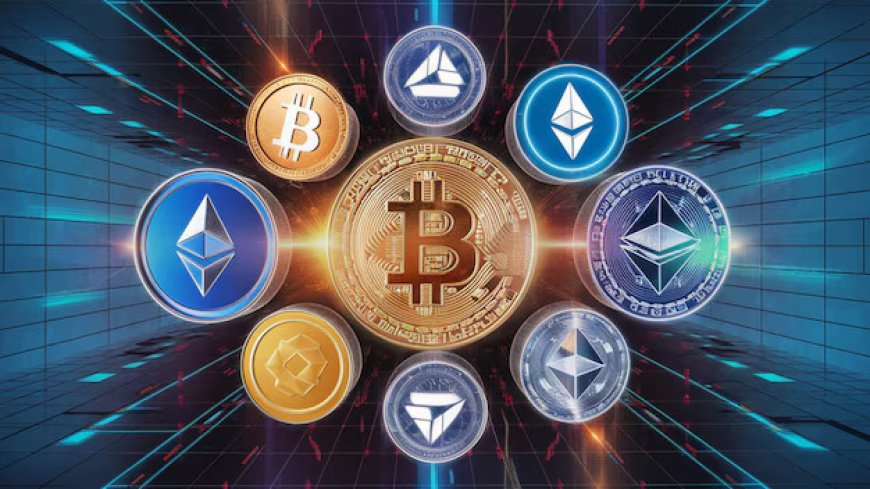How to Create Your Own Cryptocurrency Token: A Step-by-Step Process
Learn how to create your own cryptocurrency token step-by-step, from choosing a blockchain to promoting it effectively.

The world of cryptocurrency is expanding rapidly. New tokens are being created daily, serving unique purposes across various industries. So, if you’re interested in developing your own crypto token, you’re on the right track. Here, we’ll walk you through the process step by step, breaking down the essentials.
Understanding the Basics: What is a Cryptocurrency Token?
A cryptocurrency token is a digital asset built on a blockchain. While some tokens operate independently, most are developed on existing blockchains, such as Ethereum, Binance Smart Chain (BSC), or Solana.
Tokens differ from coins in one major way. Coins, like Bitcoin, have their own blockchains. Tokens, however, rely on the infrastructure of an existing blockchain. These digital assets can represent various assets, such as shares in a company, a commodity, or even a vote in a decision-making process.
Creating a token is not as complex as it might sound. With a clear process and the right tools, you can have your token live on the blockchain in no time.
Step 1: Define the Purpose of Your Token
Before you jump into Crypto Token Development, ask yourself, "Why am I creating this token?"
Your token needs a clear purpose. Are you looking to create a utility token for a platform? Perhaps you’re interested in an asset-backed token or a governance token? Knowing the purpose will help guide the features, functions, and requirements for your token.
Some common uses for tokens include:
- Utility Tokens: Used within a specific platform for various functions.
- Security Tokens: Represent ownership in an asset or investment.
- Governance Tokens: Allow holders to vote on decisions within a decentralized project.
- Stablecoins: Pegged to a stable asset like the US dollar to reduce volatility.
Step 2: Choose the Right Blockchain Platform
Selecting the right blockchain for your token is essential. Many people opt for Ethereum because of its extensive tools, compatibility, and security. Other popular blockchains for token creation include Binance Smart Chain (BSC) and Solana.
- Ethereum: Known for its smart contract functionality. The ERC-20 standard makes token creation relatively straightforward.
- Binance Smart Chain (BSC): Faster and cheaper than Ethereum, with a similar token standard called BEP-20.
- Solana: Known for high speeds and low costs. It’s ideal for applications requiring fast transaction processing.
Evaluate factors like transaction fees, scalability, and the blockchain community’s support. Each blockchain has different requirements and standards for token development.
Step 3: Select a Token Standard
Once you’ve chosen a blockchain, you’ll need to select a token standard. Token standards outline the rules and functions your token will have. For example:
- ERC-20 (Ethereum): This standard defines a common set of rules, ensuring your token is compatible with most Ethereum wallets and applications.
- BEP-20 (Binance Smart Chain): Similar to ERC-20, this standard works on the Binance network, allowing compatibility with BSC wallets and dApps.
- SPL (Solana): Solana’s token standard, designed for speed and efficiency.
Most Crypto Token Development projects use the ERC-20 or BEP-20 standard because of their wide adoption and versatility.
Step 4: Design Your Tokenomics
Tokenomics refers to the economic structure of your token. Essentially, it’s how your token will operate in terms of supply, distribution, and incentives. Some key aspects to consider:
- Total Supply: How many tokens will exist? Fixed supply can create scarcity, while a limitless supply can support ongoing needs.
- Distribution: Decide how your tokens will be distributed. Will some be reserved for founders, development, or community incentives?
- Incentives and Utility: Why would people want to use or hold your token? Consider use cases like staking rewards, access to premium features, or transaction discounts.
Clear tokenomics is crucial, as it affects the perceived value of your token. A Crypto Token Development Company can help you structure a solid economic model for your token if you’re unsure where to start.
Step 5: Develop a Smart Contract
Smart contracts are self-executing contracts with terms directly written into code. They run on the blockchain and automatically enforce token rules.
To create a token, you’ll need a smart contract. The code defines how your token works, including its supply, transfers, and any additional functions you want. While there are templates available, it’s best to tailor the contract to meet your specific needs.
Common Functions in a Token Smart Contract
Here are some basic functions your contract should include:
- Transfer: Enables the transfer of tokens from one wallet to another.
- BalanceOf: Returns the token balance of a given address.
- Approve: Allows a wallet to approve a third party to spend a specified amount of tokens.
- TransferFrom: Facilitates the transfer of tokens from one wallet to another on behalf of the token holder.
- Mint/Burn: Lets you create or destroy tokens, useful for managing supply.
If you’re new to coding, consider working with a Crypto Token Development Company or using tools like OpenZeppelin. They provide secure, pre-audited smart contract templates for various token standards.
Step 6: Test Your Token
Before deploying, testing is critical. Deploy a test version of your token on a test network, which mimics the main blockchain but allows you to use test funds instead of real ones.
For Ethereum, use Ropsten or Rinkeby. For Binance Smart Chain, use the BSC Testnet. This lets you verify that your token operates correctly without risking real funds.
Things to check in testing:
- Transfer Functionality: Ensure tokens can be transferred smoothly between wallets.
- Minting/Burning: Verify that minting and burning work as expected.
- Gas Fees: Test transactions to see what gas fees are required.
Testing helps identify and fix potential issues before your token goes live.
Step 7: Deploy Your Token
Once you’re satisfied with testing, you’re ready for deployment. This step involves pushing your smart contract to the blockchain. Since this is a live operation, you’ll need to pay gas fees in the native cryptocurrency of the blockchain you’ve chosen (e.g., ETH for Ethereum, BNB for Binance Smart Chain).
After deployment, your token contract will be live. You’ll receive a contract address, which you can share with others to allow them to interact with your token.
Step 8: Verify Your Token on Block Explorers
Block explorers like Etherscan or BscScan let you verify your token’s contract. This adds transparency and legitimacy to your token by allowing anyone to view its code and transactions.
To verify your token:
- Submit the contract address to the block explorer.
- Confirm your token’s information and provide details such as the token name, symbol, and decimals.
- Complete the verification process, allowing users to see your token’s activity on the blockchain.
Verification is optional but recommended. It boosts your token’s credibility and lets users interact with your token confidently.
Step 9: List Your Token on Wallets and Exchanges
Your token is live, but it’s not yet accessible to others. Start by adding it to popular wallets like MetaMask, Trust Wallet, or MyEtherWallet. Most wallets allow you to add custom tokens by entering the contract address, token symbol, and decimals.
If you want your token to trade publicly, consider listing it on decentralized exchanges (DEXs) such as Uniswap for Ethereum tokens or PancakeSwap for Binance Smart Chain tokens. Listing on a DEX enables users to buy and sell your token without relying on centralized exchanges.
Step 10: Promote Your Token
Now that your token is created and listed, you’ll need to promote it. Here are some effective ways to spread the word:
- Social Media: Build a presence on platforms like Twitter, Reddit, and Telegram to engage potential users.
- Crypto Communities: Join crypto forums and discussion groups to share your project.
- Website and Whitepaper: A dedicated website and comprehensive whitepaper build trust and provide information about your token’s purpose and utility.
- Collaborate with a Crypto Token Development Company: A professional company can assist in marketing, community management, and ongoing support for your token.
Promotion is an ongoing process. Consistent marketing, clear communication, and community engagement are key to driving your token’s growth.
Final Thoughts
Creating a cryptocurrency token is both exciting and rewarding. With this step-by-step guide, you’re equipped to navigate the process, from defining your token’s purpose to promoting it after launch. Crypto Token Development opens the door to new opportunities in various industries. Whether you’re building a token for a decentralized platform, a new digital currency, or a project on the blockchain, a strong understanding of each step will help you build a successful and sustainable token.
What's Your Reaction?


























